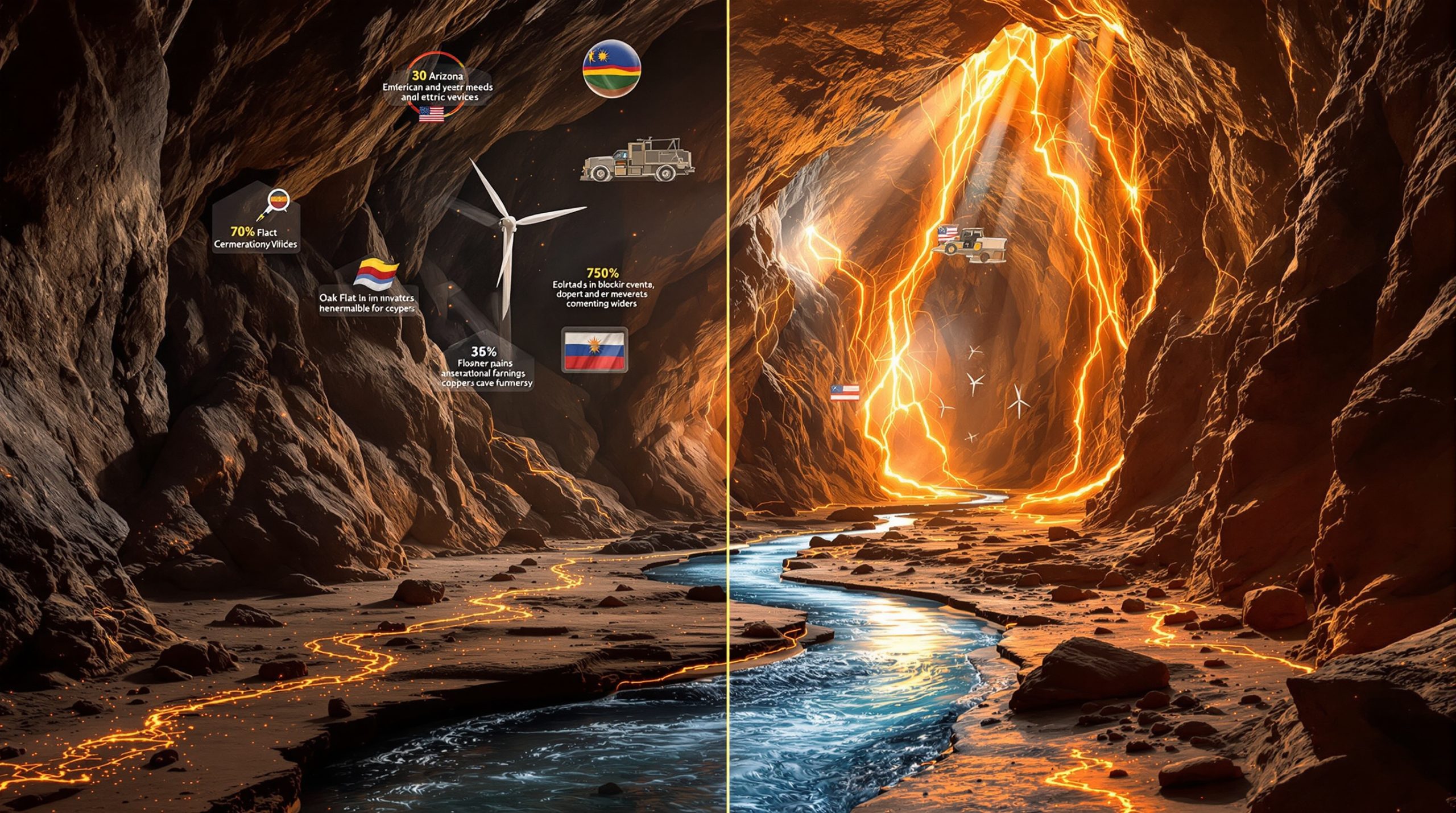Strategic M&A Trends in Australia's Gold Mining Sector
Australia's gold mining sector is experiencing unprecedented consolidation as record gold prices fuel acquisition appetite. This strategic wave of mergers and acquisitions is reshaping the competitive landscape, with mid-tier producers feeling mounting pressure to scale up or risk becoming acquisition targets themselves. Let's examine the key dynamics driving this transformation and what it means for investors, mining executives, and the future of Australian gold production.
What's Driving the Current Wave of Gold Mining M&A in Australia?
Record Gold Prices Creating Opportunity
The gold price rally has created exceptional conditions for dealmaking in Australia's mining sector. With all-time high gold prices up 30% since late 2024, Australian gold miners are generating unprecedented cash flows that provide financial flexibility for strategic acquisitions. According to Evolution Mining CEO Lawrie Conway, his company achieved remarkable net profits of A$1,700 per ounce in the June quarter alone.
"If you look at the assets that Newmont sold in North America late last year, people thought [the buyers] paid too much, and were they buying at the gold price high? But the gold price has moved up 30% since then," Conway noted, highlighting how rapidly market conditions have changed.
These record prices have transformed balance sheets across the sector, allowing companies to make ambitious moves that would have been unthinkable just 18 months ago. With operating margins exceeding A$2,500 per ounce at some operations, miners can justify paying premiums for quality assets while still delivering value to shareholders.
Consolidation Pressure Among Mid-Tier Producers
The expanding valuation gap between industry leaders and mid-tier producers has created undeniable consolidation pressure. Northern Star Resources, now valued at approximately A$26 billion, and Evolution Mining at A$16 billion, have established themselves as the dominant Australian gold miners, creating scale disadvantages for smaller competitors.
Wayne Bramwell, Westgold Resources Managing Director, observed this trend directly: "I think the whole M&A thematic will just keep going, and it may drop down, and you're already seeing it in some sense."
This Gold M&A consolidation wave has left few mid-tier producers untouched. Bramwell specifically identified Regis Resources as "probably the only mid-tier that hasn't done a transaction in the last 18 months." This observation underscores how companies that haven't participated in M&A risk becoming targets themselves.
Former Spartan Resources Managing Director Simon Lawson, who joined Ramelius as deputy chairman after their merger, noted this circular dynamic: "I think maybe the combination has actually made Ramelius a bit of a target for bigger players."
Strategic Asset Positioning
Beyond simple consolidation, miners are strategically acquiring assets that complement their existing operations. The most successful transactions target geographic synergies where nearby operations can share infrastructure, technical expertise, and processing facilities.
Processing infrastructure in particular has become a key driver of regional consolidation. Companies with excess mill capacity are acquiring satellite deposits to maximize throughput and operational efficiency. Conversely, miners with promising deposits but no processing facilities seek partnerships with established operators to accelerate development timelines.
Stuart Tonkin, Northern Star Managing Director, noted that market conditions are ripening for strategic positioning: "Going back a few months, I would have said that perhaps things were a bit hot and elevated, but there's been a lot of retraction in equities, and I think, if anything, that that motivates the catalyst for more M&A."
What Major Gold Mining Deals Have Shaped the Australian Landscape?
Landmark Transactions of 2025
The past year has witnessed several transformative deals that have reshaped Australia's gold mining hierarchy. Northern Star's A$6 billion acquisition of De Grey Mining and its Hemi project represented one of the sector's largest transactions, solidifying Northern Star's position as Australia's premier gold producer.
Ramelius Resources made a similarly bold move with its A$2.4 billion takeover of Spartan Resources, dramatically expanding its production profile and resource base. This transaction exemplifies the accelerating pace of mid-tier consolidation.
International interest in Australian assets remains strong, with Gold Fields takeover offer set to complete its acquisition of Gold Road Resources, consolidating full ownership of the Gruyere operation. Meanwhile, Alkane Resources finalized its merger with Toronto-listed Mandalay Resources Corporation, extending its international reach.
Strategic Development Asset Acquisitions
Development-stage assets have become particularly attractive targets, allowing acquirers to secure future production at lower valuations than operating mines. Genesis Minerals paid A$400 million for Focus Minerals' Laverton project, a strategic move to expand its development pipeline.
Other notable development asset transactions include:
- Minerals 260 paying Zijin Mining A$166.5 million for the Bullabulling development project
- Capricorn Metals announcing a A$188 million acquisition of Warriedar Resources
- Catalyst Metals purchasing Sandfire Resources' Old Highway gold project for A$32.5 million
These acquisitions reflect a strategic emphasis on securing quality development assets that can be fast-tracked into production while gold prices remain strong.
Operating Asset Transactions
Operating asset transactions have been equally significant, with Greatland Gold acquiring Newmont's Telfer mine and Havieron project. This transaction represents a major strategic pivot for Greatland Gold, transforming it from a junior explorer to a gold producer.
Brightstar Resources has pursued a consolidation strategy in the Sandstone gold district, aggregating smaller operations to achieve economies of scale. This regional consolidation approach has become increasingly common as companies seek to optimize processing infrastructure and extend mine life through operational synergies.
How Are Gold Mining Executives Approaching M&A Strategy?
Timing Considerations in the Current Market
Industry executives hold divergent views on the optimal timing for acquisitions in the current gold price environment. Ramelius CEO Mark Zeptner advocates for opportunistic dealmaking regardless of price cycles:
"Now, there is a school of thought that you shouldn't do deals at the top of the gold price. I probably believe you do them when you can, and as long as you're applying reasonable gold prices in your assumptions, you do them when you can, otherwise, you might be waiting a long time for a gold price low."
In contrast, Evolution Mining's Lawrie Conway has adopted a more conservative approach: "I think it's fair to say what we've said for the last 12 months, that there's time to do deals and there's time to make money, and right now it's time to make money."
These contrasting philosophies highlight the strategic dilemma facing executives: capitalize on current opportunities despite elevated valuations, or exercise patience while focusing on operational excellence and organic growth.
Value-Creation Philosophies
Regardless of timing preferences, leading executives emphasize disciplined approaches to valuation and shareholder value creation. Jim Beyer, Regis Resources Managing Director, articulated this principle: "Every decision that we make is underpinned by, is it value-accretive for our shareholders?"
This focus on shareholder returns rather than "growth for growth's sake" has become increasingly important as the industry matures. Companies with proven integration capabilities have a competitive advantage in delivering post-merger synergies and avoiding operational disruptions.
Due Diligence Approaches
Thoroughness in due diligence has become a defining characteristic of successful acquirers. Ramelius Resources exemplifies this methodical approach, having first purchased a stake in Spartan Resources in July 2024 before proceeding with a full acquisition after extensive evaluation.
Zeptner explained this philosophy: "We've always tried to get our head around value. We've never gone really early on a few [drill] holes. We probably leave it later than maybe some would like, but that means that we don't go too early on something that doesn't turn into something."
This careful approach extends to post-merger integration planning. Ramelius demonstrated this by appointing former Spartan Managing Director Simon Lawson as deputy chairman to ensure continuity and knowledge transfer—a strategic move that preserves operational expertise and institutional knowledge.
What Assets Could Be Potential M&A Targets?
Development Projects Attracting Interest
Several development-stage projects are generating acquisition interest within the sector. Bellevue Gold has opened a data room for potential suitors, signaling its openness to strategic alternatives as it advances its high-grade project toward production.
Market speculation has centered on Regis Resources as both a potential acquirer and target. Recent rumors suggested Regis was in talks to acquire AngloGold Ashanti's 70% stake in the Tropicana operation, though Regis stated it wasn't in "advanced discussions" regarding the asset.
Projects with clear development pathways and derisked execution plans command premium valuations in the current environment. Companies that have completed definitive feasibility studies and secured necessary permits attract particular interest from mid-tier producers looking to bolster their near-term production profiles.
Potential Divestment Candidates
Despite strong gold prices, several major producers are evaluating potential asset divestments to optimize their portfolios. Speculation has emerged around Northern Star's smaller Carosue Dam operation as a potential divestment candidate as the company focuses on its core assets.
Evolution Mining's Mungari operation, despite recent expansion to 200,000 ounces annual production, continues to attract speculation about its long-term fit within Evolution's portfolio. Similarly, Evolution's Red Lake operation in Canada has shown operational improvements but remains subject to strategic review discussions.
Paradoxically, these strong gold prices make potential divestments more attractive to sellers and buyers simultaneously. Assets generating substantial cash flow at current gold prices (with margins exceeding A$2,500/oz at some operations) can command premium valuations while still offering value to acquirers with longer-term horizons.
Regional Consolidation Opportunities
The Tropicana joint venture structure (AngloGold 70%, Regis 30%) has created ongoing speculation about eventual consolidation. Such joint venture arrangements often become natural targets for simplification through acquisition by one partner.
Vault Minerals has emphasized organic growth at its King of the Hills operation, with head of corporate development Len Eldridge noting: "From our perspective, we've got a lot on our plate in terms of opportunities in the business and I do think we've got the most compelling value proposition in the sector today." However, this strong value proposition also makes the company an attractive potential target.
Processing hub strategies continue driving regional consolidation. Companies with centralized processing facilities seek to acquire satellite deposits within economic trucking distance to maximize mill throughput and extend operational life.
Will International Players Increase Australian Gold Investments?
North American Interest in Australian Assets
North American gold producers have shown renewed interest in Australian assets, attracted by the country's stable mining jurisdiction and proven geological potential. Gold Fields has explicitly expressed interest in continued Australian growth following its pending acquisition of Gold Road Resources.
Agnico Eagle Mines has stepped up its business development activities in Australia, suggesting potential future investment. Meanwhile, Newmont's divestment strategy, including the sale of its Telfer mine to Greatland Gold, has created opportunities for other operators to acquire established assets.
Recent North American transactions have influenced price expectations in the Australian market. The premium valuations achieved in North American gold deals have established new benchmarks that Australian targets reference in negotiations, potentially increasing acquisition costs for domestic players.
Asian Investment Considerations
Asian mining companies maintain strategic interest in Australian gold assets, though recent moves suggest evolving priorities. Zijin Mining's divestment of its Bullabulling project to Minerals 260 for A$166.5 million indicates strategic repositioning rather than wholesale retreat from the Australian market.
Chinese investors continue evaluating Australian gold opportunities, attracted by the country's stable mining regime and transparent regulatory environment. These sovereign risk advantages make Australian operations particularly attractive compared to higher-risk jurisdictions.
Currency considerations significantly influence investment decisions, with the Australian dollar gold price creating different value propositions for international versus domestic acquirers. This currency dynamic can create competitive advantages for international players during certain market cycles.
Competitive Dynamics with Domestic Players
Australian mid-tier producers increasingly compete against international capital in contested acquisition scenarios. While domestic players benefit from local knowledge and operational synergy potential, international majors offer scale advantages in bidding contests.
This competitive tension often manifests in elevated transaction premiums as multiple bidders emerge for quality assets. The most successful acquirers develop clear valuation frameworks that establish maximum bid thresholds based on reasonable assumptions about future gold prices and operational improvements.
Regulatory considerations remain important for foreign investments, though Australia's foreign investment review process has not significantly impeded gold sector transactions. The transparent regulatory regime provides certainty for international acquirers contemplating significant investments.
How Are Companies Balancing Growth with Shareholder Returns?
Capital Allocation Strategies
Evolution Mining exemplifies the industry's focus on "banking the upside" from higher gold prices, with CEO Lawrie Conway highlighting their exceptional margins: "We made A$1700 an ounce net just in the June quarter, and that was still at A$300-400 an ounce below the [current] gold price."
These extraordinary cash flows have created a strategic inflection point for capital allocation. Companies must balance growth investments against dividend returns while maintaining appropriate debt levels and operational flexibility.
Leading producers have prioritized debt reduction in recent quarters, strengthening balance sheets to support future opportunities. This disciplined approach enhances financial resilience while maintaining capacity for strategic acquisitions when compelling opportunities arise.
Hedging strategies significantly impact available capital for deals. Companies with extensive hedge books realize lower effective gold prices, potentially constraining their acquisition capacity compared to unhedged competitors who capture full market pricing.
Organic Growth versus Acquisitive Growth
Many producers have prioritized organic growth initiatives alongside their M&A strategies. Evolution Mining completed a significant plant expansion at Mungari, increasing capacity from 130,000 to 200,000 ounces annually—an investment that enhances value without acquisition premium payments.
Vault Minerals has similarly emphasized plant expansion at its King of the Hills operation, focusing on organic optimization before pursuing external opportunities. This balanced approach recognizes that internal investments often deliver superior returns on capital compared to acquisitions at peak valuations.
Exploration success can reduce pressure for M&A activity. Companies making significant discoveries through brownfield and greenfield exploration programs can enhance their production profiles without competing in contested acquisition scenarios.
Shareholder Expectations Management
Effective communication of M&A strategy has become increasingly important for maintaining investor support. Companies must clearly articulate how potential acquisitions align with their broader strategic vision and value creation framework.
Premium justification in competitive bidding scenarios requires transparent communication about expected synergies and integration benefits. Shareholders increasingly demand detailed explanations of acquisition rationales, particularly for transactions occurring at elevated gold price levels.
Integration planning and synergy realization have become critical success factors that investors monitor closely. Companies with proven track records of successful post-acquisition integration command higher valuation multiples and greater shareholder support for future transactions.
What Factors Could Impact Future M&A Activity?
Gold Price Trajectory Considerations
Uncertainty around the sustainability of record gold prices creates both opportunities and challenges for potential acquirers. While current prices support elevated valuations, transaction structures increasingly incorporate contingent consideration elements that adjust purchase prices based on future gold price performance.
Mark Zeptner acknowledged potential market cooling: "I've said that before, so who knows whether there's been a bit of a wave and we have a bit of a lull now." This perspective recognizes that sustained high prices may eventually reduce urgency around consolidation as companies generate substantial organic cash flow.
Global economic conditions significantly influence safe-haven demand for gold, creating additional uncertainty for long-term price projections. Acquirers must develop robust valuation models that accommodate multiple price scenarios when evaluating potential transactions.
Currency effects on the Australian dollar gold price add another layer of complexity. International acquirers may perceive different value propositions than domestic players based on their operating currency and hedge book positions.
Financing Environment
Equity market appetite for gold transactions remains strong, with successful capital raisings supporting recent deals. However, investors have become increasingly selective, favoring transactions with clear strategic rationales and reasonable premium levels.
Debt financing availability has expanded as bank balance sheets improve and alternative lenders enter the mining finance space. This competitive financing environment has reduced borrowing costs and increased maximum leverage ratios, enhancing acquisition capacity for credit-worthy buyers.
Alternative financing structures including royalties, streams, and contingent consideration mechanisms have gained popularity. These innovative approaches help bridge valuation gaps between buyers and sellers while managing risk in volatile price environments.
Capital raising capacity differs significantly between junior developers and established producers. This disparity creates natural acquisition dynamics as development companies with promising assets but limited funding options consider strategic alternatives.
Regulatory and ESG Factors
Foreign investment review considerations remain important for international acquirers, though Australia's transparent process provides procedural certainty. Recent transactions have received timely approvals without significant conditions, maintaining Australia's reputation as a predictable investment jurisdiction.
Environmental permitting timelines significantly affect development asset valuations. Projects with secured approvals command premium valuations compared to earlier-stage opportunities facing uncertain regulatory pathways.
Community engagement requirements have intensified, with social license considerations becoming increasingly important in transaction due diligence. Acquirers conduct detailed assessments of community relationships and outstanding obligations before finalizing deals.
Carbon reduction commitments impact operational decisions and capital allocation priorities. Companies with established decarbonization strategies evaluate potential acquisitions through this additional lens, potentially influencing target selection and valuation approaches.
How Should Investors Evaluate Gold Mining M&A?
Key Transaction Assessment Metrics
Premium levels relative to historical transactions provide important context for evaluating new deals. Recent Australian gold transactions have featured premiums ranging from 30% to 50% above pre-announcement trading levels, establishing new benchmarks for the sector.
Resource quality and expansion potential significantly influence long-term transaction outcomes. Investors should assess grade profiles, metallurgical characteristics, and exploration upside when evaluating acquisition announcements.
Cost position on the industry curve determines competitive sustainability and profit margin potential. Transactions that improve the acquirer's consolidated cost position through synergies or higher-grade additions typically create superior long-term value.
Integration synergy potential varies significantly between transactions. Regional consolidation deals typically offer greater synergy opportunities through infrastructure sharing, workforce optimization, and procurement advantages compared to standalone asset acquisitions.
Post-Transaction Performance Indicators
Integration milestone achievement provides early indicators of transaction success. Investors should monitor operational transition progress, retention of key personnel, and initial synergy realization against management projections.
Production profile improvements directly impact financial performance and shareholder returns. Successful acquisitions typically deliver production growth, resource expansion, and operational optimization within 12-18 months of closing.
Cost reduction realization represents a critical value driver in most transactions. Investors should track operating cost metrics post-closing to assess whether promised synergies materialize as projected in transaction materials.
Exploration success at acquired assets can significantly enhance transaction returns. The most successful acquirers implement accelerated exploration programs at newly acquired properties, often identifying additional resources beyond those included in acquisition valuations.
Potential Red Flags
Excessive premiums at cyclical peaks create substantial downside risk if gold prices retreat. Transactions exceeding 50% premium to pre-announcement prices demand particularly compelling strategic rationales and synergy potential.
Important Note: Investors should be cautious of transactions justified primarily by current spot gold prices rather than conservative long-term price assumptions. Historical mining cycles demonstrate that acquisitions completed at price peaks often destroy shareholder value.
Overly optimistic synergy projections warrant skeptical evaluation. Transactions promising synergies exceeding 15-20% of combined operating costs require detailed substantiation and specific implementation pathways to be credible.
Challenging jurisdictional considerations can undermine otherwise attractive transactions. Regulatory hurdles, community opposition, or political uncertainty can delay integration and synergy realization, potentially compromising transaction economics.
Significant management departures post-transaction often signal integration challenges or cultural conflicts. Retention of key operational leadership, particularly at acquired assets, typically correlates with successful transaction outcomes.
What's Next for Australian Gold Mining Consolidation?
Potential Near-Term Developments
Industry executives anticipate a potential pause after the recent transaction flurry. Mark Zeptner's observation about a possible "lull" following the wave of deals suggests a period of integration and consolidation may precede the next major acquisition cycle.
Stuart Tonkin predicts increased activity among smaller companies: "I think in the junior end of town, you'll see a lot more of that positioning and perhaps co-operation." This view suggests consolidation pressure may shift to exploration and early-stage development companies.
Integration periods for recent major transactions will dominate corporate focus in coming quarters. Northern Star, Ramelius, and other active acquirers will prioritize operational integration and synergy realization before pursuing additional significant acquisitions.
Development asset funding partnerships may increase as an alternative to outright acquisitions. These structured arrangements allow development companies to advance projects while giving established producers future production optionality without full acquisition premiums.
Longer-Term Structural Trends
The continued polarization between majors and mid-tiers appears inevitable. Wayne Bramwell observed this dynamic extending to smaller companies: "Now you're seeing things like Alkane, the next tier down. Today, you're seeing activity around some of the juniors … so I think it will continue to keep going."
Processing infrastructure will remain a key driver of regional consolidation. Companies with centralized processing facilities will continue acquiring satellite deposits to maximize mill utilization and extend operational life.
International interest in Australian assets will likely increase as global miners seek to rebalance portfolios toward stable jurisdictions. Australia's transparent regulatory environment and proven geological potential make it particularly attractive for international capital seeking reduced sovereign risk exposure.
ESG considerations will increasingly influence portfolio optimization decisions. Companies will evaluate potential acquisitions through sustainability lenses, potentially favoring assets with lower carbon intensities and stronger community relationships.
Strategic Positioning Considerations
Vault Minerals' perceived undervaluation creates both opportunity and vulnerability. Len Eldridge's assertion that Vault offers "the most compelling value proposition in the sector today" highlights the tension between organic growth potential and acquisition attractiveness.
Regis Resources' position as "the lone mid-tier without recent transactions" (in Wayne Bramwell's assessment) creates strategic questions about its future direction. The company must either pursue acquisitions or potentially become a target itself as the consolidation wave continues.
Northern Star's evolving portfolio optimization strategy may create opportunities for mid-tier and junior producers. As the company focuses on its core assets, potential divestments could provide growth platforms for smaller operators seeking production increases.
Evolution Mining's selective approach to growth opportunities reflects its disciplined investment philosophy. Lawrie Conway's emphasis on "making money" rather than "doing deals" suggests the company will maintain high transaction hurdles despite its substantial financial capacity.
FAQ: Australian Gold Mining M&A
How are gold mining valuations determined during acquisitions?
Gold mining valuations incorporate multiple factors including resource size, grade quality, production costs, mine life, exploration potential, and infrastructure value. Recent Australian transactions have valued operating assets at 0.8-1.2x NAV and development assets at 0.5-0.8x NAV depending on their stage and quality.
Valuation methodologies typically include discounted cash flow analysis, resource multiple comparisons, and strategic premium assessments. Acquirers develop detailed financial models incorporating synergy opportunities, optimization potential, and various gold price scenarios to determine maximum supportable acquisition prices.
The gap between in-situ resource valuation and operating asset valuation has narrowed in recent transactions. This convergence reflects both the scarcity of quality development assets and the premium that acquirers place on near-term production potential in the current strong gold price environment.
What synergies do companies typically target in gold mining mergers?
Key synergies include processing infrastructure optimization, administrative cost reductions, exploration program coordination, and capital allocation efficiency. Regional consolidation often targets 10-15% cost reductions through shared infrastructure and optimized mine planning.
Operational synergies typically manifest through improved mill utilization, optimized mine sequencing, and reduced transportation costs. Companies with multiple operations in proximity can blend ore types to improve metallurgical performance and maximize recovery rates.
Corporate overhead reductions represent another significant synergy source. Eliminating duplicate administrative functions, combining technical teams, and streamlining corporate structures can yield material cost savings that enhance transaction economics.
How does the gold price cycle influence M&A timing?
While conventional wisdom suggests avoiding acquisitions at cyclical peaks, many executives believe in acting when opportunities arise with reasonable price assumptions. Recent transactions have occurred despite record gold prices, with acquirers focusing on long-term value rather than short-term price fluctuations.
Mark Zeptner articulated this pragmatic approach: "Now, there is a school of thought that you shouldn't do deals at the top of the gold price. I probably believe you do them when you can, and as long as you're applying reasonable gold prices in your assumptions, you do them when you can, otherwise, you might be waiting a long time for a gold price low."
Transaction structures increasingly incorporate contingent consideration elements that adjust purchase prices based on future gold price performance. These mechanisms help align buyer and seller interests while providing downside protection if prices retreat from current elevated levels.
What role do management teams play in post-merger success?
Retention of key operational talent is critical for successful integration. The Ramelius-Spartan transaction demonstrates this approach with former Spartan managing director Simon Lawson joining Ramelius as deputy chairman to ensure continuity and knowledge transfer.
Leadership alignment on strategic vision and operating philosophy significantly influences integration outcomes. Successful acquirers conduct detailed cultural assessments during due diligence to identify potential conflicts and develop mitigation strategies before closing.
Technical expertise retention represents a particular priority in geological and mining engineering functions. Companies often implement targeted retention programs for key technical personnel to preserve institutional knowledge and maintain operational continuity through ownership transitions.
Human resources and cultural integration receive increasing focus in transaction planning. Leading acquirers develop detailed integration roadmaps addressing organizational structure, reporting relationships, and cultural alignment to maximize post-closing performance and minimize productivity disruptions.
Ready to Track the Next Major Gold Discovery?
Discover why significant mineral finds can deliver exceptional returns by exploring Discovery Alert's dedicated discoveries page. Our proprietary Discovery IQ model provides instant ASX mineral discovery notifications, giving you a critical market advantage that could position you ahead of transformative opportunities in the gold sector.




